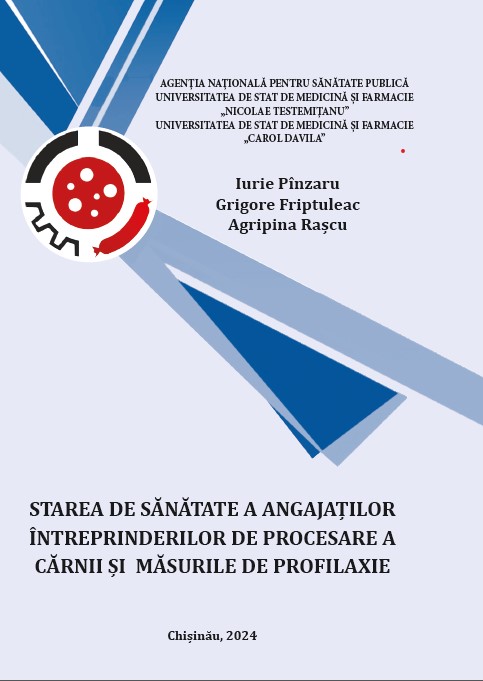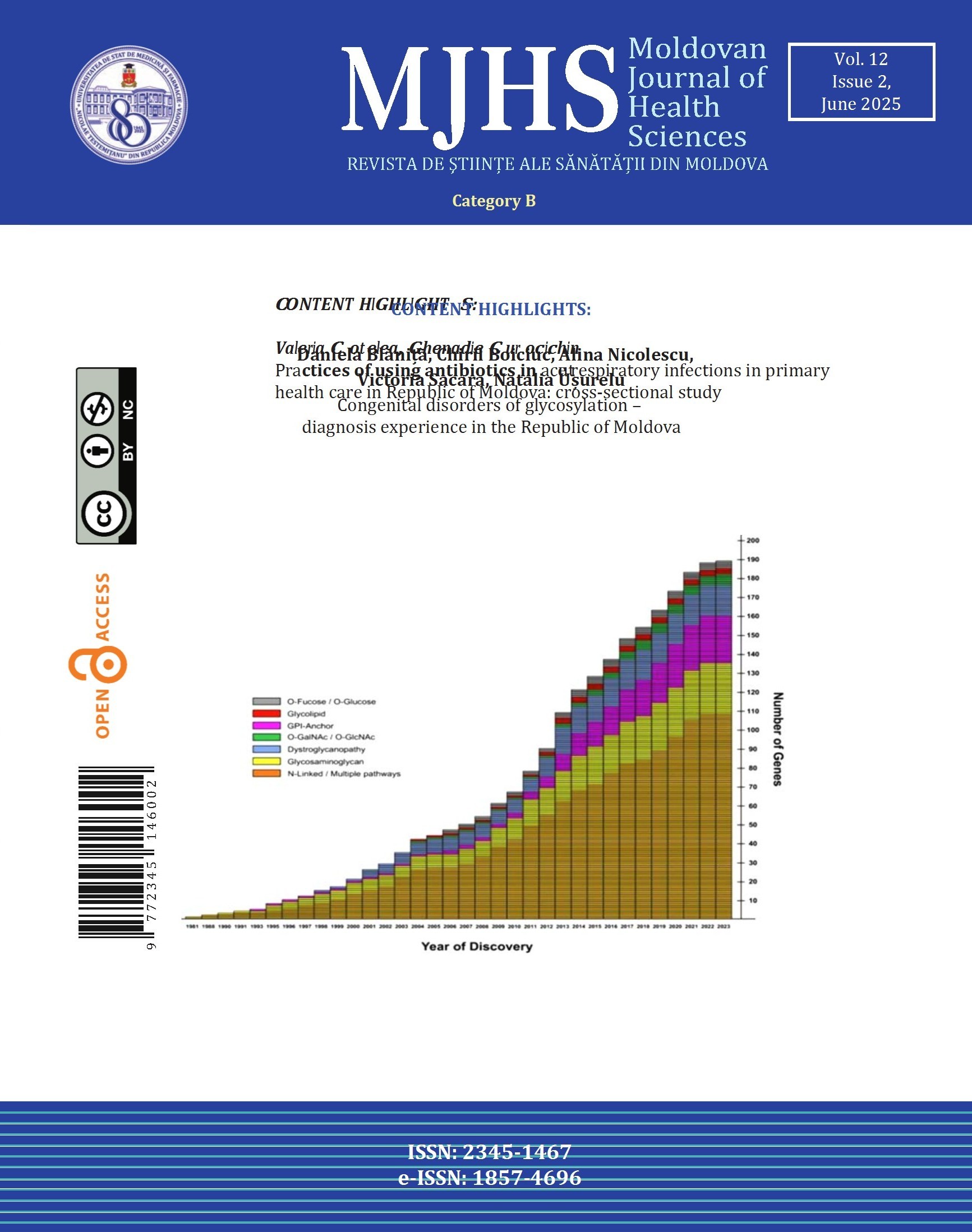Monograph details:
Pînzaru I, Friptuleac G, Rașcu A. Starea de sănătate a angajaților întreprinderilotr de procesare a cărnii și măsurile de profilaxie [Health status of employees in meat processing enterprises and preventive measures]. Chișinău; 2024. 259 p. ISBN 978-9975-57-369-6. Romanian.
 A new viewpoint on occupational hygiene in the meat processing sector is presented in the monograph „Health status of employees in meat processing enterprises and preventive measures”, written by Iurie Pînzaru, PhD, associate professor, Grigore Friptuleac, PhD, university professor, and Agripina Rașcu, university professor. The most recent study findings about the effects of various occupational risk factors on workers' health are presented, both on the authors’ research and on studies by other scholars.
A new viewpoint on occupational hygiene in the meat processing sector is presented in the monograph „Health status of employees in meat processing enterprises and preventive measures”, written by Iurie Pînzaru, PhD, associate professor, Grigore Friptuleac, PhD, university professor, and Agripina Rașcu, university professor. The most recent study findings about the effects of various occupational risk factors on workers' health are presented, both on the authors’ research and on studies by other scholars.
In this regard, the monograph offers a thorough hygienic evaluation of the work procedures and technology used in meat processing enterprises. In addition to assessing occupational risk factors identified in the workplace, the authors also highlight the characteristics, health status, and the functional state of workers involved in the primary technical phases. After their comprehensive review, the authors propose workplace health policies, detailing certain preventative techniques and actions. The monograph concludes with models of occupational health service models, which are crucial for developing new occupational health concepts, strategies, and policies.
Thus, the theoretical foundation laid by this work has clear practical significance. An important portion of the research presented in the monograph is original and can serve as a model for studies in other areas of hygiene. Optimizing working conditions to reduce occupational risk factors is crucial and represents one of the main ways to increase efficiency of the meat processing industry. Besides boosting productivity, this strategy also helps to maintain and improve employees’ health.
For the first time, the authors have conducted a comprehensive hygienic assessment of the technological and operational procedures in meat-processing enterprises, evaluated employees' health status, and analyzed the occupational risk factors in this industry. Based on their findings, they have developed specific workplace prevention strategies and occupational health service models.
The monograph’s content is fully aligned with the ten essential public health operations recommended by the World Health Organization, as well as the current national and international plans for the development of workplace-health policies. The study gains more confidence due to the substantial number and complexity of laboratory experiments and procedures performed.
From both scientific and practical standpoints, the monograph "Health status of employees of meat processing enterprises and preventive measures" is a unique and significant work that addresses contemporary public health issues.
This monograph will serve as a valuable reference for occupational hygiene and health specialists, labor inspection authorities, students of the Nicolae Testemițanu State University of Medicine and Pharmacy, as well as industry managers and professional associations in the meat processing sector.
Ion Bahnarel,
PhD, university professor
Hygiene Discipline, Department of Preventive Medicine
Nicolae Testemițanu State University of Medicine and Pharmacy

